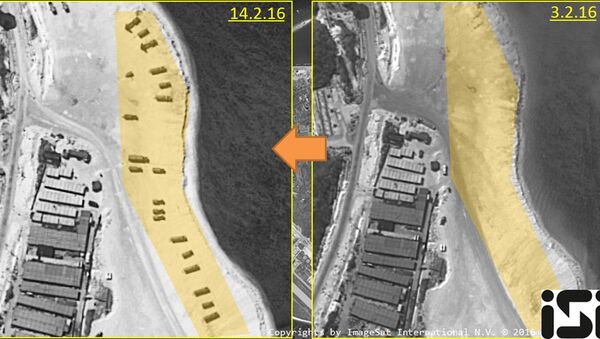Australia is planning to construct a new deep-water port in its north that would be able to accommodate US marines in a bid to help address China’s ambitions in the region, ABC reported Monday citing a number of defence and government officials as saying.
According to the sources, the facility would lie roughly 40 kilometres from Darwin, the capital of the Northern Territory, which controversially leased its own port to a Chinese operator four years ago. Apart from being a base for military activities, the new Glyde Point would also host joint commercial and industrial operations.
The announcement of the creation of a new port may arrive in the coming weeks and potentially coincides with the bi-annual Talisman Sabre US-Australian military exercise, expected to be in full swing by mid-July, ABC wrote.
Meanwhile, the well-known port of Darwin, though it already houses military facilities and receives visiting US ships, will reportedly soon offer large amphibious warships a more discreet space to be based at and operate from.
The US and Australia are known to have been stepping up their military presence across the Western Pacific while being on alert over China’s moves to gain influence in the region, by among other things creating armed outposts on contested islands in the South China Sea. One of the latest developments along these lines is the joint plan to build a military base on Manus Island, Papua New Guinea, which is northeast of Australia.
Most recently, the US flexed its muscles in the South China Sea in a joint drill with Japan, involving the USS Ronald Reagan, a nuclear aircraft carrier, as well as the JS Izumo, a Japan Maritime Self-Defence Force helicopter carrier.
#USSRonaldReagan, #JMSDF ships conduct bilateral exercises in South China Sea: https://t.co/4ecLR1EC3A #NavyPartnerships @US7thFleet @JMSDF_PAO pic.twitter.com/Qcf3GjdHU2
— U.S. Pacific Fleet (@USPacificFleet) 24 июня 2019 г.
China exerts control over the vast majority of islands, reefs and shoals in the sea, and has been, along with other competing countries in Southeast Asia, expressing concerns over the deployment of US vessels in the area, and blasting Washington for violating its sovereignty.
In early May, China expressed its “strong opposition” to two US warships sailing in close proximity to the disputed islands in the South China Sea in a move that the US claimed was aimed at challenging “excessive maritime claims”. A similar incident had happened twice before that, with Washington countering China’s claims in the region amid escalating tensions between the two top economies in a fierce trade war that has been waged over this past year.
The South China Sea is a major strategic passageway, with over $5 trillion worth of maritime cargo passing through the area annually, while it also possesses overwhelming reserves of untapped oil and natural gas, thereby drawing the attention of other competing claimants like Brunei, Malaysia and the Philippines.




